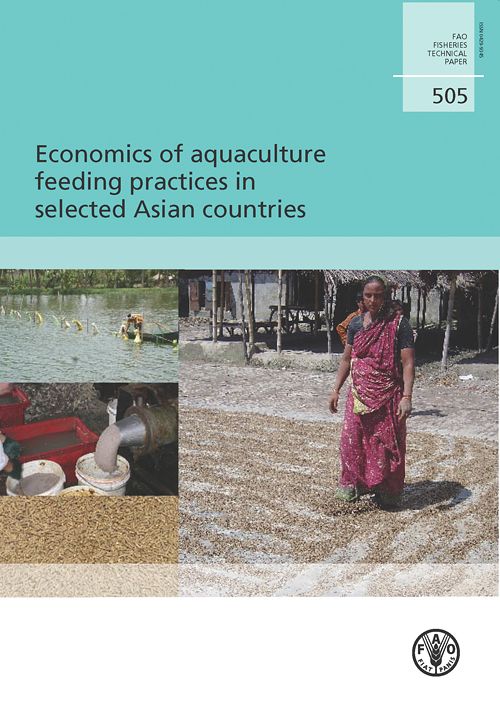Economics of aquaculture feeding practices in selected Asian countries
29 April 2008 | Mohammad R. Hasan (ed.) | 1911 Downloads | .pdf | 5.17 MB | Bangladesh, Better management practices, China, Freshwater finfish, India, Inland aquaculture, Marine finfish, Nutrition and feeding, Philippines, Shrimp, Thailand, Vietnam
This technical paper provides an analysis of the economic implications of, and the reasons for, adopting various feeding practices for different fish species and aquaculture systems in Asia. It consists of case studies in six Asian countries (Bangladesh, China, India, the Philippines, Thailand and Viet Nam) and an overall synthesis ending with conclusions and recommendations.
The systems studied include extensive/traditional, semi-intensive and intensive farms for a number of different species including sutchi and pangasiid catfishes (Bangladesh and Viet Nam), hybrid catfish (Thailand), carp polyculture (India and China), prawn and milkfish polyculture (the Philippines). The work identifies the principal input costs, assesses the economic rates of return (gross and net margins), returns to labour, land and capital, gross and net total factor productivity, and break-even prices and production.
For the most part, intensive farms applying industrial feeds attained the highest economic returns, although not necessarily the highest benefits. In many cases, feed costs were extremely high, accounting for over 80 percent of the total. Feed cost, feeding rate, stocking rate, recovery or survival rate and fertiliser cost were identified as the key variables in influencing production. Use of intensive farming was consistent with strong farmer education and good extension practices. It is expected that the results of these studies will assist in adopting appropriate feed management strategies depending on the availability of inputs and the level of technical know-how of the farmers.
Copyright, all rights reserved.

